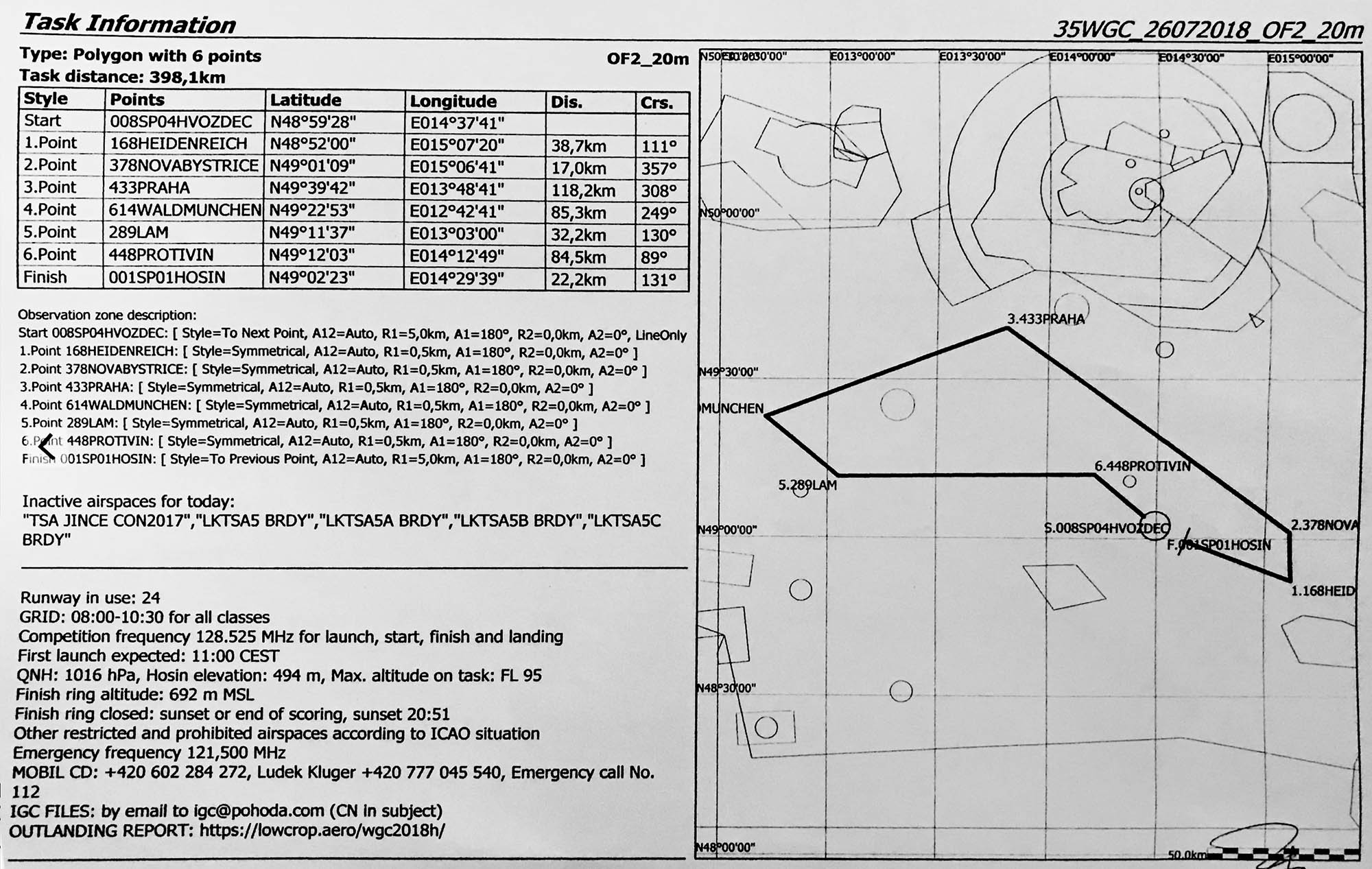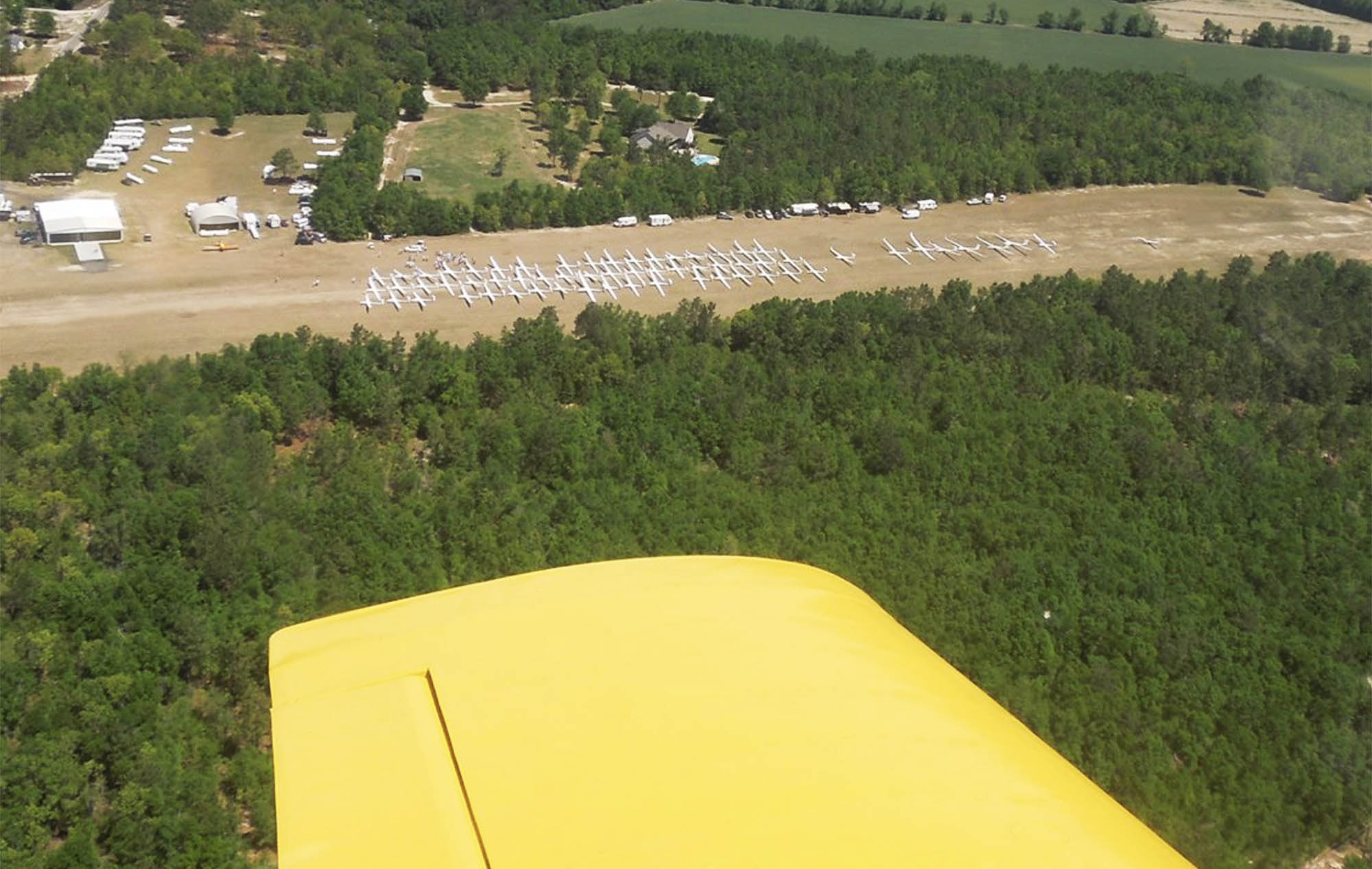ABOUT Racing Sailplanes
A modern racing sailplane converts 1′ of altitude into 50′ of forward progress.
Racing sailplanes are the most efficient flying machines ever designed by man. Computer engineered laminar flow airfoils and cantilevered composite-fiber wings carry pilot and craft at freeway and faster speeds, bending the air so precisely that altitude is traded for distance at extraordinary rates. A modern racing sailplane converts one foot of altitude into fifty feet of forward progress, a slope barely detectible by human senses.
These slippery crafts also accelerate quickly and are amazingly silent for their size – a stealthy combination that can test even the acute alertness of hawks and eagles. Soaring pilots occasionally get a chance to slide in behind these apex predators and the raptors are often slow to realize they are being followed by an 800 pound craft with 50 foot wings! Yes, you can see their surprise when they finally “check six” … and their reserved camaraderie as they circle and climb with you, but only at a very respectful distance of their choice.
Sailplane pilots enjoy a panoramic view of brown-green earthscape and cloud-filled sky through a streamlined Plexiglas canopy, comfortable in semi-reclining seats, controlling the ship with slight and almost automatic pressure on flight controls. In addition, glide-slope computers, GPS navigation systems, and sensitive rate of climb instruments provide positional and air quality data that helps the pilot navigate and optimize flight speeds.
Racing season starts in early Spring & finishes in late Fall.
The tremendous capability of these strikingly beautiful craft to go far and fast is demonstrated during a racing season that starts in early Spring and finishes in late Fall. In any given week, contests ranging from local inter-club meets to regional and national competitions are in progress. Although the size of the event varies, a race day at all of these meets can be very similar. Pilots and organizers arrive at the contest site in the morning to review soaring-specific weather forecasts and plan a suitable task. A good task in the East could be a 150 mile triangle, while stronger Western conditions might indicate a 300 miler.
Up to 60 Sailplanes Takeoff
Racing pilots and their crews will then stage up to 60 sailplanes on a takeoff grid, a set of tow planes gets everyone launched, and the pilots will sustain at various points around the airport waiting for the start gate to open. When the ‘start flag’ drops, racers stream through the GPS defined start-gate at 5000′ altitude heading for a first turnpoint miles in the distance.
TASKING
The different tasks are used to challenge the pilot and match the soaring you have for a particular day. The pilot flights are recorded into a GPS recorder to prove you have flown the task. In the cockpit, the pilot has a flight computer with a moving map to see where the turn points are located and when you reach it. There are 3 types of tasks:
Finding the Best Lift Sources
Sailplane racing is a competitive sport, but it is not a ‘pedal to the metal’ endeavor. Pilots must find the best lift sources on course and optimize cruise speeds for lift conditions, so in-flight speeds typically move between 60 and 100 mph. Changing flight speeds to match current and anticipated lift conditions is called ‘shifting gears’ and the pilots who do it best are usually listed at the top of the daily contest score sheet.
Many races are won or lost during the last 30-mile sprint.
Reaching the last turnpoint, pilots race back to the contest site using experience, glide-slope computers, and occasionally a bit of gamble to convert altitude into an optimal ‘final-glide’ velocity. Many races are won or lost during this last 30 mile sprint to the finish line. Racers often ‘burn off’ reserve energy during the final mile and cross the GPS-defined finish line at a good clip (around 120 mph) … zooming into a mild wing-over before entering the landing pattern. Since the finishers tend to arrive together, it’s not unusual to have several sailplanes zooming through the finish gate just as others are landing. The aerial maneuvering can look risky, but standard procedures and good radio communication makes this finale relatively easy and safe.
Average speeds are 50-70 mph (East) 60-90 mph (West)
The fastest pilot around the course wins that day and gets 1000 points – and the others receive prorated points based on a ratio to the winning speed. For example, if the winner averaged 50 mph and the second-fastest averaged 40, number two would get 800 points for the day. Daily points are added to get an accumulated score and the pilot who has the most points at the end of the contest is the winner. Average speeds in the East are in the 50-70 mph range, while 60-90 is more typical in the Western US. Not too shabby for a vehicle with no engine.
In addition to using GPS technology for in-flight navigation, racing sailplanes also carry GPS loggers that record the entire flight. This information is used by the contest scoring team to calculate speeds and verify contestants rounded turnpoints properly. Pilots also use the logged flight data and specialized software to replay entire flights in 3D or other modes for self-critiques or to perform head-to-head comparisons with other racers.
Racing sailplanes are perfect soaring machines, but Mother Nature does not always serve up perfect soaring weather. Some soaring days are truly exceptional and you can fly in a sky filled with lift and click off a mile and a half a minute in any direction. All sailplane racing pilots have memories of these magical soaring flights. A larger number of other days are average but allow moderately ambitious excursions, and some ‘soaring’ days turn out to be difficult with weak and broken lift and it is a struggle to stay in the air. Although everybody hopes for the magical days, all racing pilots take the most pride in getting around the course in difficult conditions.
CONTEST PERSONNEL
These are the personnel needed to run a contest.





